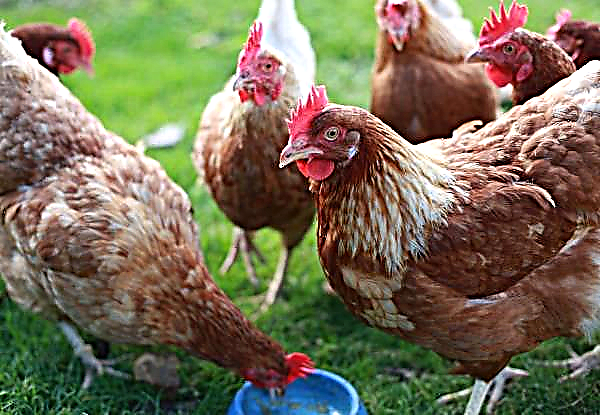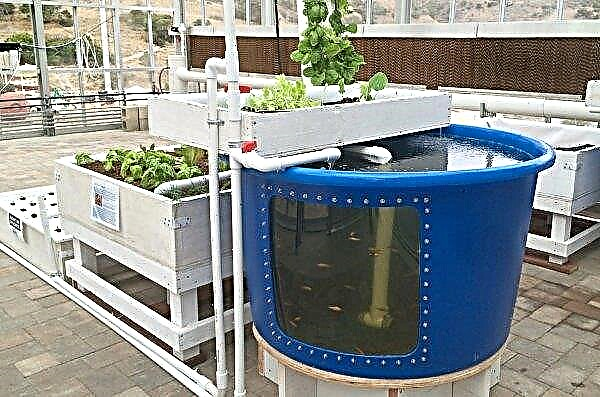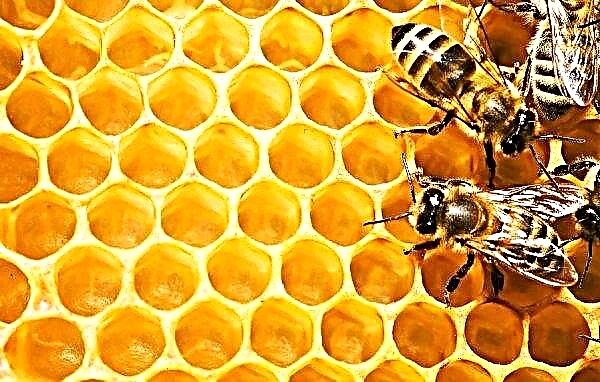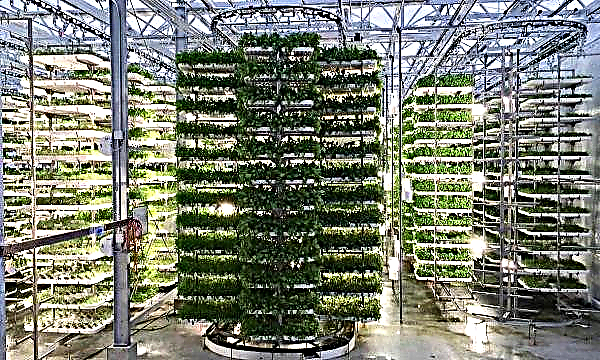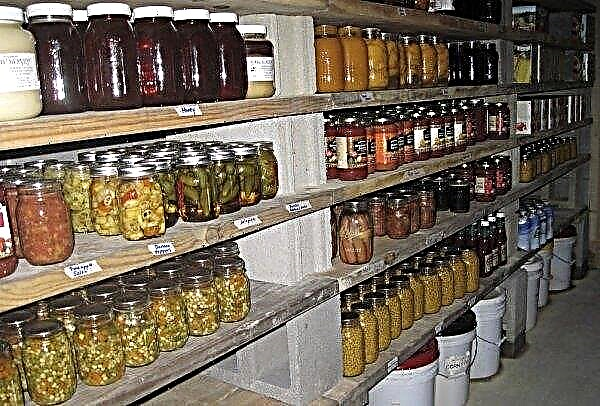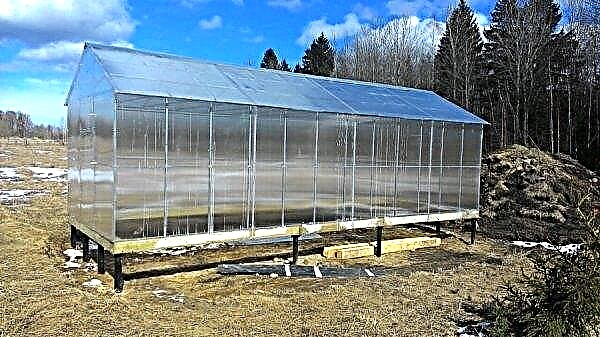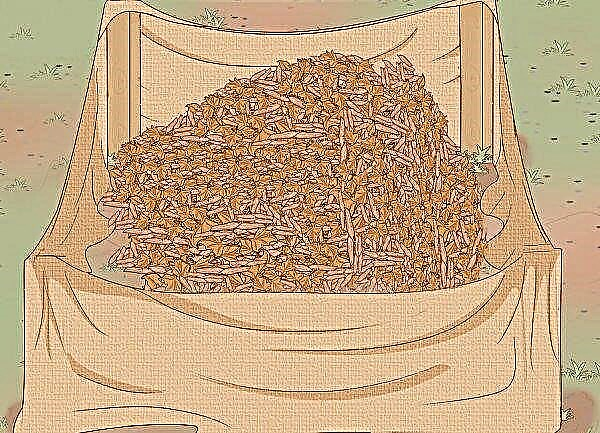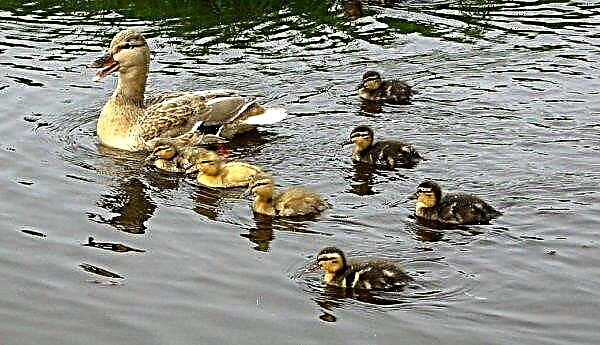The presence of nests in the house is, first of all, a matter of convenience for the farmer. According to the nature-laid program, the chicken, one way or another, equips itself a place for laying eggs. In this case, the farmer would be wasting time searching for them all over the chicken coop or incur losses due to damaged products (every poultry breeder faced the problem of chickens picking their own eggs). Laying hens are sensitive to comfort, their egg production depends on this, so it is important to provide them with suitable conditions. Consider what kind of nests are and what you need to know to build them.
Did you know? The ratio of the number of domestic chickens and people on Earth is 3: 1. Electrophobia is detected in some people. – fear of chickens and chickens. It is possible that these two facts are somehow related.
Types of nests for laying hens
Regardless of the appearance and functionality, all of them must comply with the following parameters:
- be in a dry and warm place, protected from drafts and direct sunlight (away from the entrance);
- be located at least 30 cm above the floor, but below the perch level;
- have a mesh floor for ventilation;
- contain a comfortable flooring of hay or sawdust;
- have a shelf for take-off (5x2 cm);
- be safe for birds (consist of quality materials).
 The number is calculated based on the ratio: 1 nest for 3-5 chickens. You can purchase the finished one or make it yourself by choosing the most suitable model.
The number is calculated based on the ratio: 1 nest for 3-5 chickens. You can purchase the finished one or make it yourself by choosing the most suitable model.Did you know? One of the largest and most unusual nests in nature, similar to the craters of a volcano 4 m in diameter, is built in the wild by a distant relative of domestic chickens - the Australian Eye Chicken.
From improvised materials
A temporary option for beginner poultry farmers or those who have been given chickens for overexposure. Cardboard boxes, wicker baskets, plastic buckets are used - everything that is on the farm, but only clean and whole. Keeping birds in such makeshift nests for a long time is not recommended.
Boxes (boxes)
The simplest option, which is a box of thin boards with an open front wall or cut round openings for entry. It is also necessary to think over a door made of plywood or mesh, which can be used to cover the entrance to teach the chicken to rush right here. The drawback of boxes and booths is the constant access of the chicken to the eggs, which makes them pecking.
The drawback of boxes and booths is the constant access of the chicken to the eggs, which makes them pecking.
With egg collector
The most optimal option from the point of view of safety and convenience, although somewhat more difficult to arrange. The key point is the equipment of the sloping bottom, along which the eggs roll into the tray. There are structures with a double slope (in the center of the floor there is a gap leading to the tray) and with a container, as well as shelving (multi-tier nests).
Mounted
These are egg-laying sites adjacent to the wall of the chicken coop outside. Convenient for the farmer in that there is no need to go into the chicken coop to collect products. The disadvantage of this model is the required insulation of the walls and the roof with foam.
Farmers often use combinations of the above options for their needs (for example, mounted with an egg collector).
Features of a nest with an egg collector
As already mentioned, such nests are needed to preserve the whole egg production and increase the productivity of chickens, because in a comfortable, secluded place the bird rushes better. The peculiarity of this species is the slope of the floor and a low litter (so that the eggs slide freely into the tray).
Important! It is necessary to deprive the chicken of access to eggs, for this the tray is separated by dense opaque matter.
The egg compartment can be in front, on the back wall and on the side. Rear placement is typical for mounted outdoor models, but is also found in standard indoor models.
In this case, for attaching to the wall on a supporting structure from wooden boards, a plywood sheet-pallet is laid, mounted with the protrusion 20 cm at the back (for an egg collector) and 10 cm in front (for a nut), and a nest is attached to this pallet.
If the farmer places the nests with the rear egg collectors in the form of tiers, then for the convenience of collecting eggs from the middle trays, you can either leave space for the passage between the tiers and the wall, or reduce the length of the tiers.
Pros
- The advantages of nests with an egg collector:
- simplification of the process of collecting and counting eggs, saving time and effort of the poultry farmer;
- obtaining high-quality products, and, accordingly, high profitability;
- special relevance for large farms.
Minuses
- Negative nuances characteristic of the arrangement of such structures:
- more complex construction process;
- materials and time costs;
- the need for strict observance of the rules of the construction (otherwise the eggs may be damaged);
- if it is planned to build a rack, then you need to attach an egg-collecting container to each floor.
How to make a nest with an egg collector do it yourself
For the construction you will need a certain set of materials and tools. In addition, construction technology will differ depending on the material (metal or wood).
Wooden
Consider the process of manufacturing a design with an egg container.
Before you begin construction, you need to prepare:
- boards;
- wooden block for container handle;
- material for upholstering the tray (for example, polystyrene foam) and litter (preferably sawdust, but you can hay or straw);
- staple gun;
- scissors;
- construction knife;
- fasteners;
- varnish and foam for wood processing;
- hammer drill;
- fabric for curtains.
Egg chickens nest: video
The manufacturing process includes the following steps:
- Perform the drawing, taking into account the free area in the house and the purpose of the chickens - for meat and egg breeds, the parameters are usually a little more. Overall dimensions should be at least 30x30x30 cm (depth can vary up to 40 cm).
- Prepare the prepared boards with varnish using a foam sponge (for greater strength and moisture resistance).
- Connect all the parts together in the form of a box, paying attention to the fact that the fasteners do not protrude from the walls and can not cause injury to the bird.
- Make the floor at a 40 ° angle.
- Attach the tray to the front of the slot and cover with foam inside for softness.
- Attach the wooden block to the side of the tray lid as a handle.
- Cover the gap between the nest and the egg compartment with a cloth curtain.



Important! Do not mount the structure directly on the wall, in winter the nest will cool very quickly. In addition, such a design is unreliable. It is necessary to use special stands - scaffolds.
Metal
Such a model requiresaboutless time and money, but it will also last longer.
To complete the work, you will need:
- stainless steel sheets;
- metal pipes with a cross section of 3 cm;
- grid;
- metal grinder;
- drill;
- fasteners;
- soft material for the tray.
The order of construction is as follows:
- The drawing is made out, marking is done on metal sheets.
- Walls, roofs and tray elements are cut out.
- The bottom is made of mesh.
- The walls and the bottom are connected, and then the roof.
- An egg compartment is attached to the back wall, which is laid out with soft material.
Important! A roof for any nest necessarily must be done at an angle. A direct roof will be the object of gatherings of layers and will soon become unusable.
Drawings of the chicken nest with egg collection
Below are drawings of models with egg compartments.
 For productive laying of eggs, chickens need to create comfortable conditions: a warm, dry, shaded place at some distance from relatives. There are several options for equipping a nest in a chicken coop, the most optimal and convenient of which is with an egg collector.
For productive laying of eggs, chickens need to create comfortable conditions: a warm, dry, shaded place at some distance from relatives. There are several options for equipping a nest in a chicken coop, the most optimal and convenient of which is with an egg collector.

